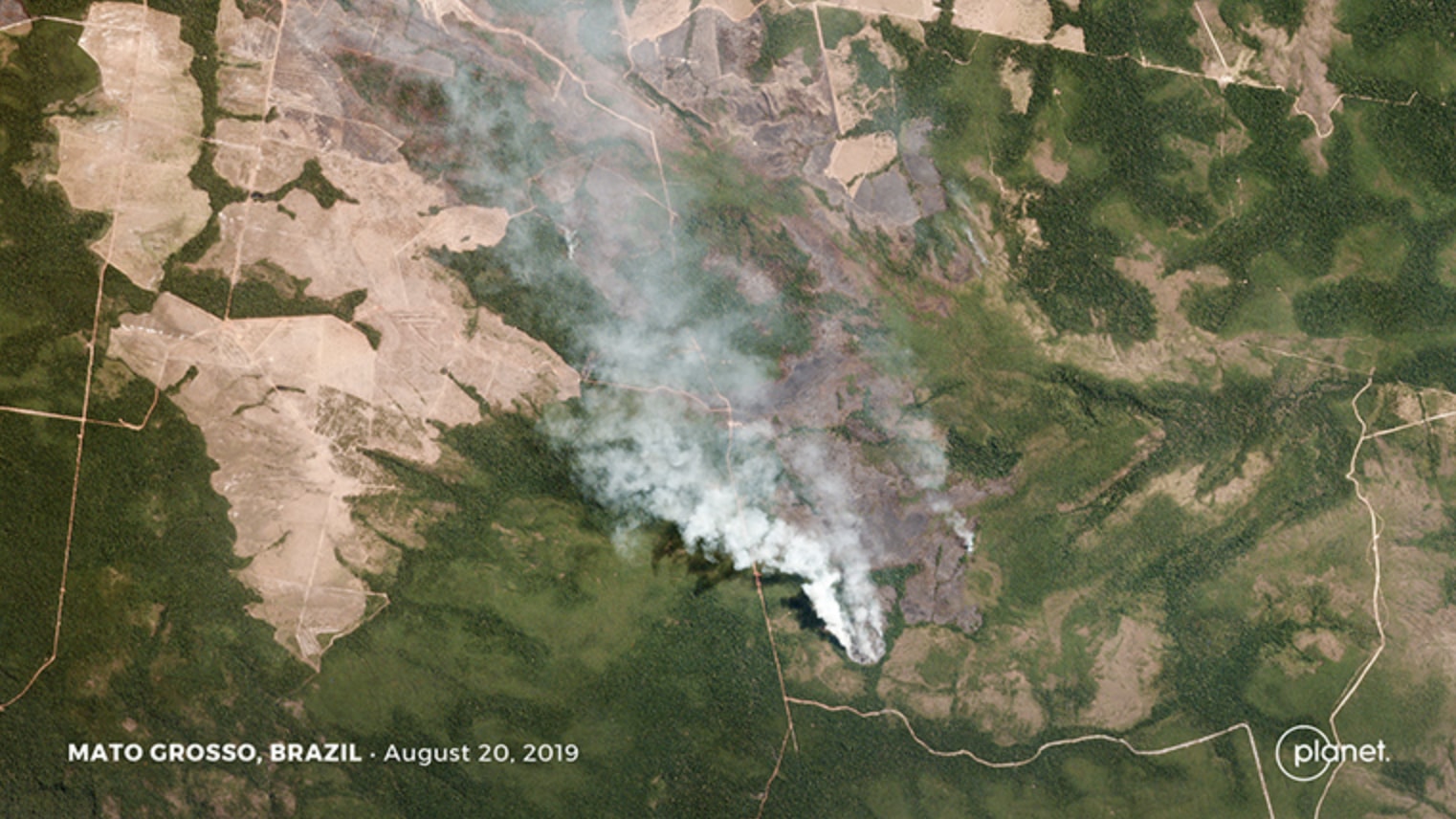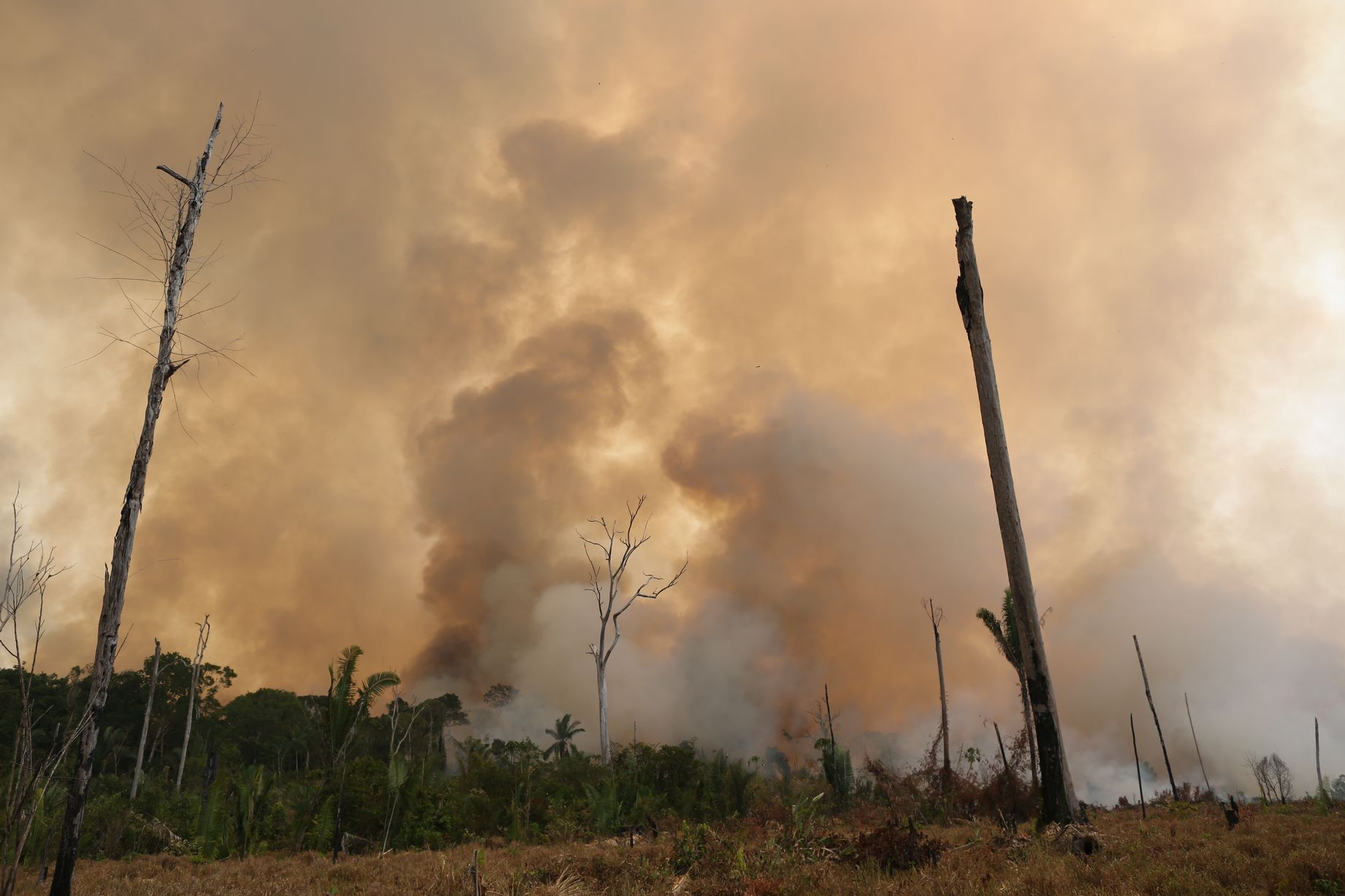The Amazon rainforest is burning up. Fires have been raging at an unprecedented rate, over 70,000 fires affecting 4.6 million acres were recorded in the first six months of 2019. That’s a 62% increase over last year according to Brazil’s National Institute for Space Research. And that is not good news.
The largest rainforest on the planet is home to 10% of all known animal species and to the vast majority of fish species. With a stunning display of flora and fauna the Amazon boasts a plethora of plant species, 75% of which are endemic to the region. This makes the Amazon is vital to the exchange of oxygen for carbon dioxide in the atmosphere.
Today, the forest is facing a multitude of threats as a result of unsustainable economic development; with 20% of its biome already lost. It is the biggest deforestation front in the world and interventions are urgently needed to prevent a large-scale, irreversible ecological disaster. The leaders of the US, Japan, Germany, France, Italy, the UK and Canada have indeed made the matter a priority at the G7 meeting in Biarritz last weekend.
Brazil, which is home to more than 60% of the forest, is cutting trees at an increasing rate to create more cropland and facilitate the industrial development of the area. Although this practice has been going on for many years, deforestation rates have exploded this July under the presidency of Bolsanaro, wedded to Trump-style deregulation.
Bolsonaro scoffed at his portrayal as Brazil’s “Capitão Motoserra” (Captain Chainsaw) and mocked Emmanuel Macron and Angela Merkel for challenging him over the environmental devastation resulting from his policies. Germany and Norway pledged to halt payments to the Amazon Fund for environmental protection – €35 million from Germany alone. “They can use this money as they see fit. Brazil doesn’t need it”, Bolsonaro told journalists in Brasilia.
The G7 leaders offered Brazil a $20 million aid package that Bolsonaro first refused with insulting words for French President Macron. The next day (August 28), he backtracked, saying he would accept foreign aid for the Amazon fires only if “Brazilian people controlled the funds”. Apparently he no longer required to have Macron “withdraw his insults”.
The latest official figures show 1,659 new fires were started between Sunday and Monday, taking the total this year to 82,285 – the highest since at least 2013. More than half of the fires are in the massive Amazon basin.

Photo Credits: Planet Labs
The far-right leader, backed by powerful mining and agricultural enterprises, repeatedly claimed that his administration was the victim of an international defamatory campaign based on imprecise satellite data showing a jump in deforestation. Nevertheless, official data laid bare the scale of the crisis currently unfolding.
According to Brazil’s globally respected National Institute for Space Research – whose leader has been removed upon charges of favouring sensationalist interpretations – the Amazon forest has lost an estimated 2,254 sq km (870 sq miles) in July alone, an area larger than Sao Paolo. This represents a 278% rise with respect to the same period of 2018.
Several International Organizations, including Greenpeace and the WWF, have taken aim at Bolsonaro’s anti-environmental policies which include slashing the budget of Brazil’s environmental agency and easing the penalties relative to the deforestation. Pope Francis – who is preparing to host a special synod on the Amazon in October – has also addressed Bolsonaro on the environment during a forum with Italy’s earthquake victims in July questioning “the blind and destructive mentality” of those seeking to profit from the world’s biggest rainforest.
Related topics: The Open Amazon and its Enemies – Protected Areas – Forests: Our Hope for Reducing Climate Change – Placing Forests at the Heart of the SDGs
Following the spike in deforestation, the forest is now suffering extensive burning. There is no official report, but using satellite images it has been estimated that more than 600 million acres have been affected by the fire. Local newspapers report that farmers and land-grabbers are organizing “fire days” fostered to take advantage of weaker enforcement by the authorities. Meanwhile the Brazilian president has accused NGOs – presenting no evidence – of setting fires in the Amazon to embarrass his government.
During a campaign rally held in the Amazon last year, Bolsonaro had already addressed conservationist groups stating that as president he would have targeted “cowardly” environmental NGOs who were “sticking their noses” into Brazil’s domestic affairs. Bolsonaro on Thursday claimed his government “lacks the resources” to fight the blaze, as many environmental groups are now blaming him directly for the devastation.
It is unclear which fires have been deliberately set and which were accidental and, in any case, the problem is not restricted to Brazil. Neighboring Bolivia is also experiencing unusually large wildfires that have reportedly destroyed 5,180 sq km (2,000 sq miles) of woodlands.
Released Satellite images of the Amazonian region show that the areas undergoing the greatest deforestation rates are those that have more roads. The strong correlation between the location of deforestation fronts and the presence of existing roads or projections of new roads suggests that isolated deforestation fronts are going to be connected along major infrastructure development routes.
As devastating fires – the smoke of which has blocked out the sun over Sao Paulo on Monday – rage through the Amazon, leaked documents show the Brazilian government’s intention to build a bridge, a motorway and a hydroelectric plant in the jungle. The Amazon – the lungs of the Earth – are suffocating, and the agony could last a long time. At least as long as Bolsonaro is in power and continues with his deregulation agenda.







